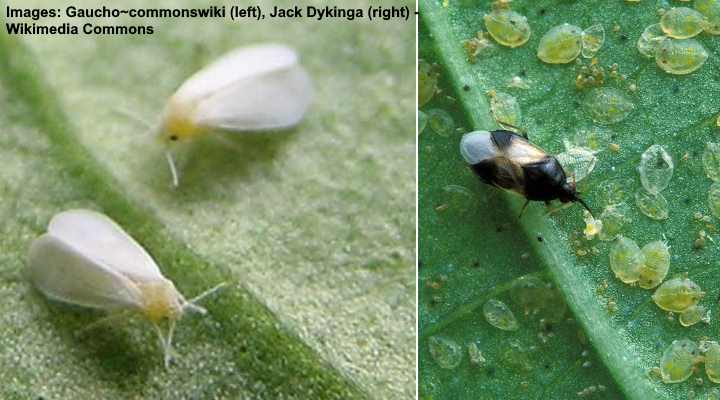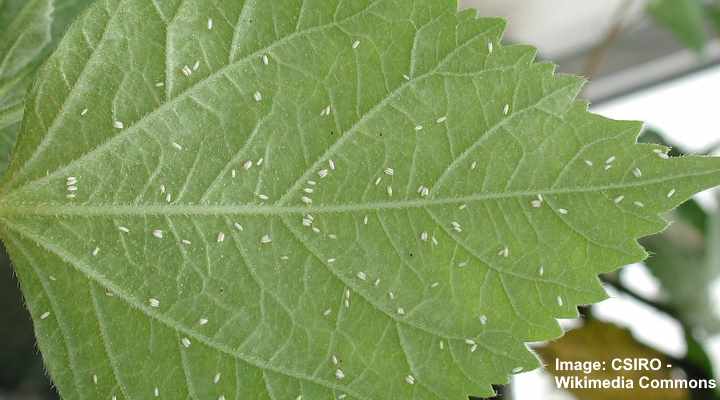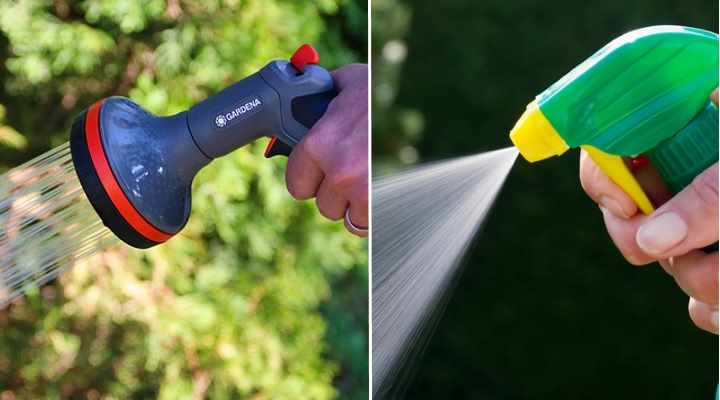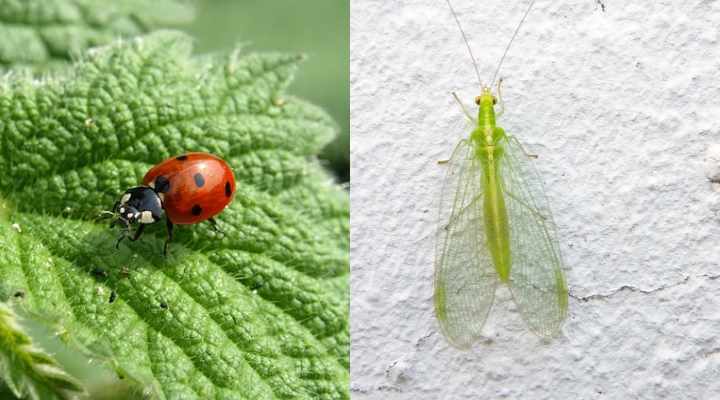Whiteflies on Plants: Effective Ways to Kill These Tiny White Flying Bugs

Whiteflies are small flying insects that can quickly infest your garden plants and houseplants. Whiteflies rapidly cause damage to vegetables and plants by sucking juices from them. These white-winged bugs also damage plants by infecting them with disease and causing a sooty mold to grow on plant foliage.
Whiteflies are related to planet-destroying aphids in the insect suborder Sternorrhyncha. There are over 1,500 species of whiteflies. Although they are called “flies,” whiteflies are a type of winged bug—not a true fly species.
Whiteflies attack vegetable plants such as cabbage, citrus trees, eggplants, and potatoes. The tiny white fuzzy bugs also quickly infest greenhouse plants such as tomatoes.
This article is a handy guide to getting rid of whiteflies in your garden. You’ll also find helpful tips on eradicating whiteflies from indoor areas such as greenhouses and houseplants.
How Do Whiteflies Look Like?

The tiny whitefly is a pest that can usually be found on the underside of the plant’s leaves. Right image: A bug feeding on whitefly larvae
Whiteflies look like minuscule white moths. These tiny white flying bugs can be as small as 1 or 2 mm with a wingspan of 3 mm. These white sap-sucking insects have small triangular-shaped bodies, and swarms of them will quickly fly away when disturbed. Whitefly larvae have tiny oval bodies.
Where to Find Whiteflies on Plants
Whiteflies thrive in warm climates where they reproduce throughout the year. In colder climates, whiteflies are found on vegetable plants outdoors during summertime and in greenhouses. If you bring infested plants indoors, you will also find whiteflies infesting other houseplants.
Whiteflies live on the underside of plant leaves, especially around the leaf veins. They love hiding under plant foliage, which makes the tiny flying bugs challenging to spot. You’ll also find whiteflies lurking in unfurled new leaves. The hordes of annoying “flies” prefer to feed on new plant growth.
Adult whiteflies lay eggs on the underside of leaves where the whitefly larvae grow—often undetected until the infestation is enormous.

Adult silverleaf whiteflies on the underside of a leaf
What are the Signs of Whiteflies Infestation?
Whiteflies produce a sticky “honeydew” substance that makes leaves feel sticky. This sticky stuff attracts black sooty mold that can give leaves an unsightly black color. When a whitefly infestation is large, you’ll notice masses of tiny white bugs crawling on the leaf undersides.
As well as seeing whiteflies flying around plants in your garden, you may also notice more ants. Ants feed on honeydew, and the sweet substance attracts more ants—who may even protect whiteflies from predators.
Whiteflies Life Cycle
The life cycle of whiteflies starts as a tiny egg before turning into larvae and growing into an adult. Depending on the species, the whitefly life cycle takes between 16 and 30 days. Adult whiteflies can live for one to two months, and females can lay up to 400 eggs in their lifetime.
Female whiteflies lay their oblong pale-yellow eggs in rings on the underside of upper leaves. Whitefly eggs can take between seven and twelve days to hatch.
Whitefly larvae are also called nymphs or crawlers. The larvae look like white tiny oval spots. As soon as larvae hatch, they start sucking on leaf juices. As the nymphs develop, they begin to crawl around the underside of the leaf. Larger nymphs don’t crawl but tend to stay on one spot.
After the fourth instar or stage, the nymph becomes an adult with a heart-shaped body and wings.
The short whitefly lifecycle allows populations of the white plant-killing bugs to increase quickly. Whiteflies reproduce faster in warm conditions, and the nymphs are hard to detect. Whiteflies spend all their life under leaves.
Whitefly Plant Damage
Whiteflies cause plant damage in three ways—weak plant growth, spreading disease, and blackened foliage.
First, a whitefly infestation weakens plant growth as the masses of bugs feed on plant juices. Whitefly plant damage can result in yellow, shriveled leaves that eventually drop off. A significant infestation of whiteflies could result in plant death.
Second, whiteflies can transmit plant viruses from diseased plants to healthy ones. Although whiteflies spend most of their life under leaves, they can fly to other plants. When they start feeding on those plants, they can spread disease through their mouths.
Thirdly, the honeydew that whiteflies secrete can cause a black fungus to form. This “sooty mold” makes leaves look black and ugly. Sooty mold doesn’t harm plant health. But if many leaves are affected, the plants can become stressed from insufficient photosynthesis.
How to Get Rid of Whiteflies

Hosing down the whiteflies or using soap solution are effective ways to get rid of whiteflies
The best ways to eliminate whiteflies on garden plants is to hose down your plants, use insecticidal soap to kill the tiny white bugs, or use sticky traps to control the small white flying insects. Introducing beneficial insects can help control whiteflies by keeping their numbers down.
Here are some of the most effective ways of getting rid of whiteflies from your plants.
Get Rid of Whiteflies By Hosing Them Off the Plants
Hosing down your plants with water is an excellent way to get rid of whiteflies naturally. The force of the water spray dislodges the whitefly nymphs and eggs and sends adult whiteflies scattering. A forceful stream of water also removes sooty mold from infected plant leaves.
When using the garden hose to get rid of the tiny white bugs, it’s vital to be vigilant. Due to the whiteflies’ life cycle, the females can continue laying eggs. So, you need to hose down infected plants daily to get rid of whitefly infestations for good eventually.
If you use the hose method to blast whiteflies with water, remember to pay attention to the leaf undersides. This is where the whitefly larvae and eggs reside. To eradicate whitefly, you need to disrupt their life cycle to prevent more bugs hatching.
Eradicate Whiteflies on Plants By Using Soapy Water
Soapy water is another natural method for killing whiteflies. Mix two tablespoons of mild dish soap in 1 gallon (4 l) of water and mix well. Fill a pressure spray bottle with the soapy solution and spray the undersides of leaves to get rid of whiteflies. Repeat every two or three days for the best results.
Using soapy water treat pest infestation such as whiteflies and aphids is an effective way to kill them and their eggs. Also, using a pressure spray bottle has the dual effect of knocking the tiny bugs off leaves.
When using soap sprays for insect control, remember to apply the solution early in the morning or in the evening. Soap residue on leaves can cause burn in strong sunlight.
Eliminate Whiteflies Using Neem Oil
Neem oil is a natural insecticide that can be help kill whiteflies. Mix 1 oz. (30 ml) neem oil in a gallon (4 l) of water. Fill a pressurized spray bottle with the neem solution. Kill the whiteflies by thoroughly spraying all surfaces of the leaves, paying attention to the undersides.
Like soap, neem oil is best for getting rid of whiteflies when used in the morning or evening.
Use neem oil every few days to kill emerging whitefly nymphs to prevent their growth. During the other days, thoroughly hose down garden plants with water to get rid of adult whiteflies living under plant leaves.
One of the disadvantages of using neem oil is cost. If you have a large whitefly infestation, it can be expensive making organic neem solutions for insect control. In most cases, using a soapy water solution is just as effective at eradicating plant pests naturally.
Get Rid of Whiteflies by Vacuuming Them Off Your Plants
A small handheld vacuum cleaner can effectively eliminate whiteflies from garden plants. Vacuuming leaves and stems removes whitefly adults. Vacuuming whitefly is most effective as soon as you notice the tiny white bugs that look like dust under leaves. You’ll need to use other methods to kill off whitefly larvae.
To prevent infesting more plants in your greenhouse, garden, or home, it’s vital to make sure the white insects don’t escape. So, after sucking up the little white bugs, seal the vacuum bag in an airtight plastic bag. Pop in the freezer for 24 hours to kill the whitefly adults and larvae. Then empty the bag in the trash.
Vacuuming flying white bugs only has limited effectiveness. The vacuum cleaner can be useful if you’ve got whiteflies on houseplants. Or a handheld vacuum cleaner could be suitable for eliminating whitefly adults from one or two garden or greenhouse plants.
Control Whiteflies By Pruning Infested Plants
You can prune away parts of plants that are heavily infested with whitefly. However, pruning to get rid of whitefly requires care and attention. Too much pruning can stimulate new growth, which only attracts more whitefly. So, only prune selected portions of plants where other whitefly eradication methods don’t work.
After trimming off infected stems and leaves, remember to dispose of the foliage correctly. Either burn the infected material immediately or put in plastic bags and put it in the trash can. Never compost leaves, twigs, and plants that have had insect infestations.
How to Control Whiteflies
It’s vital to take steps to control populations of whitefly in your garden. Controlling whiteflies can help keep their numbers to an absolute minimum while you eradicate them for good. Some useful methods of whitefly control include introducing beneficial insects and using sticky yellow pads.
Here are more details on effective whitefly control.
Introduce Beneficial Insects to Control Whitefly

You can control whitefly infestation by introducing beneficial insects such as ladybug (left) and green lacewing (right)
Introducing whitefly predators is an effective way to control the number of small white flying bugs in your garden. Some types of beneficial insects that kill whitefly are green lacewings, predatory mites, and predatory wasps. These beneficial insects can destroy whiteflies at all stages of their life cycle.
The journal Annual Review of Entomology reports that tiny parasitic wasps (Encarsia formosa) effectively control whiteflies. For example, in greenhouses, these wasps can suppress whitefly population growth. The parasitic wasps lay eggs in the bodies of whiteflies. However, the tiny wasps are not harmful to humans.
Another study found that green lacewing (Chrysoperla carnea) can eliminate whitefly larvae. In some cases, the whitefly predators reduced whitefly larvae by 100 percent on certain crops.
Some studies show that various ladybug species are useful for controlling whiteflies, mites, scale insects, and aphids in greenhouses.
Use Sticky Yellow Traps for Whitefly Control
Place sticky yellow traps near your garden plants to control whitefly populations. By placing enough traps at strategic places in your garden and greenhouse, you can reduce the number of white flying bugs. The traps are effective with adult whiteflies when combined with other control methods for larvae.
Various studies have proved the effectiveness of using yellow sticky traps on whitefly.
For example, the Journal of Insect Science reported that these sticky traps “significantly suppressed the population increase of adult and immature whiteflies.”
Other studies found that yellow sticky traps are effective in pest management to limit whitefly population growth. The traps are simple to use and a low-cost pest control method.
How to Prevent Whiteflies
The best way to prevent whiteflies is to monitor plants early in the season. Some whitefly prevention methods include avoiding drought stress, not over-fertilizing plants, and inspecting plants regularly. By employing many whitefly control methods before you have a pest problem, you can prevent issues with whiteflies.
The University of California recommends the following methods to prevent whiteflies:
- Use populations of beneficial insects to prevent whiteflies from growing in numbers.
- Grow plants in your garden that attract whitefly predators such as ladybugs, spiders, birds, and lacewings.
- Don’t prune plants excessively.
- Place sticky traps at the start of the season to detect potential issues with flying white bugs.
- Use organic, slow-release fertilizers to avoid over-stimulating plant growth that attracts whiteflies.
Plants to Repel Whiteflies

Marigold plants help to repel whiteflies
Companion planting can help to repel whiteflies. Some plants have a repelling effect on whiteflies. For example, planting marigolds alongside certain vegetables can prevent whiteflies from flying near tomato plants. The marigold plants seem to give off chemicals that certain species of whitefly find off-putting.
A 2019 study reported on the effectiveness of using marigold plants to repel tomato whiteflies. Marigolds are effective repelling plants because they contain limonene. The smell of this chemical repels whitefly and slows them down. Researchers suggested interspersing marigolds in tomato plots to repel whiteflies.
How to Get Rid of Whiteflies on Houseplants
Whiteflies can quickly infest houseplants. Warm temperatures can provide the “perfect” breeding conditions for whitefly populations to multiply indoors quickly. Usually, if you look after houseplants properly and water them correctly, you can avoid severe whitefly infestations.
Here are several ways to get rid of whiteflies on houseplants:
- Use sticky yellow traps to control whiteflies. Put the yellow traps in plant pots to catch the tiny white flying bugs. These traps are also useful for preventing whiteflies on houseplants.
- Vacuum whiteflies from houseplants. Put the vacuum setting on low to avoid damaging plants and suck the pesky white flying bugs off your prized houseplants.
- Spray soapy water on whiteflies. Mix a few drops of mild dish soap in a spray bottle filled with water. Spray on infested plant leaves and leave to dry. Apply the soap solution twice a week to help control whiteflies indoors.
- Neem oil to control whiteflies. The insecticidal properties of neem oil are useful for getting rid of whiteflies indoors. Please read this article on how to eradicate houseplant pests naturally for information on how to make a neem oil solution.
Controlling Whiteflies in the Greenhouse
Getting rid of whiteflies from plants growing in a greenhouse is incredibly challenging. The life cycle of all whitefly species means they multiply rapidly in enclosed, warm, humid environments. Ways of controlling greenhouse whiteflies include regular hosing, using sticky yellow traps, and introducing beneficial insects.
Related articles:
- How to Get Rid of Common Houseplant Pests
- How to Kill Scale Bugs
- Effective Ways to Kill Aphids
- Effective Ways to Kill Spider Mites on Plants
